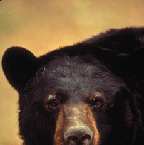 |
|
| Heidi Holman |
Three state biologists and one tribal biologist have been named US Fish & Wildlife Service Recovery Champions for 2010. According to the announcement, Recovery Champions, “are U.S. Fish and Wildlife Service staff and their partners whose work is advancing the recovery of endangered and threatened species of plants and animals.”
The state biologists who won the award are Heidi Holman and Lindsay Webb of the New Hampshire Fish and Game Department, Misty Buchanan of the North Carolina Natural Heritage Program, and Dan Carney of Blackfeet Fish and Wildlife in Montana.
The award honors the New Hampshire scientists for helping to restore the Karner blue butterfly, which was at the brink of extirpation from New Hampshire when their work began. More information about their work for the Karner blue is available in a New Hampshire Fish and Game press release, and in the Recovery Champions announcement.
Misty Buchanan was honored for her work with two plants, rough-leaf loosestrife and golden sedge. She was named for her survey work on 27 listed plant species in North Carolina, which located populations of those species, and provided information about their health. That expertise made her a valuable partner to the US Fish and Wildlife Service.
Dan Carney was recognized for his work with grizzly bears on the Blackfeet Indian Researvation in Montanta. The US Fish and Wildlife Service cites his tireless work in defusing conflicts between the grizzly bears and humans, as well as his management plan, and research as key factors in the grizzly bear recovery in the hundreds of square miles of bear habitat on the reservation. He works for the Blackfeet Nation. A US Fish and Wildlife press release has more info. His award generated TV coverage.
More info on the work of all of these wildlife biologists is available from the Recovery Champions announcement.
Photo: Heidi Holman participates in a controlled burn. Photo credit: NH Fish and Game



